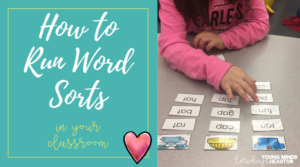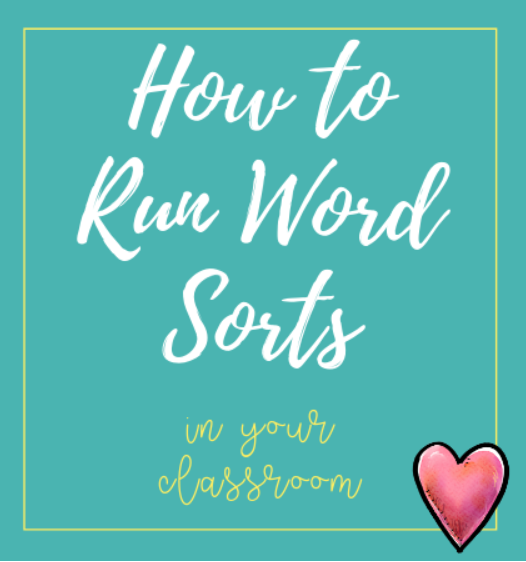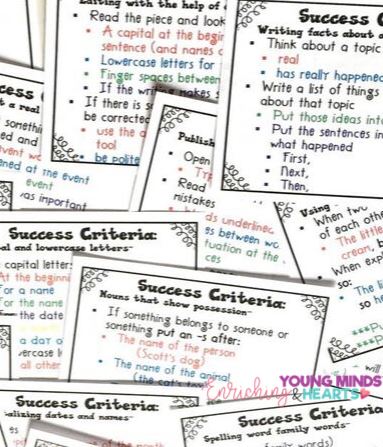Word study is a key component of learning to read. We want students to be aware of the patterns in words, so that they can become more fluent readers. This is where word sorts come into play. Word sorts help students recognize the spelling patterns in words, all while manipulating the words to incorporate hands-on learning.
If you are considering running word sorts in your classroom, do it! You’ll see amazing benefits in your student’s learning. Don’t know how to do them? Check out some tips below!
Selecting Words for the Sorts
Your first step in the word sort process is to select words for your students to study. You may have many different options (which I will list below), but one thing remains constant: the words need to follow a particular pattern.
Disclaimer: There are a few viewpoints on classroom instruction: 1- we, as teachers, should differentiate our instruction based on where our students are in their development; 2- all students should be exposed to the same grade level material (differentiation will not get below level students up to grade level). I am not here to say which is right or wrong. I am just pointing out that there are valid options to word study, no matter what your belief is. You can set up your word study lists in a way that you believe will benefit your students the greatest.
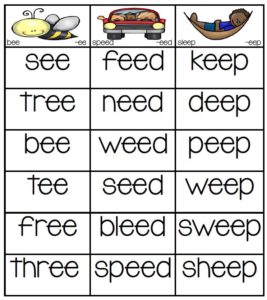 You can get your word lists from:
You can get your word lists from:
* The words your students are studying each week in the curriculum your school uses
* The scope and sequence of learning you, your grade level or school has set up
* The Words Their Way books
If none of these options are viable for you, click here for some word study resources for primary students (K-5)
Grouping
Once your word lists are ready to go, determine how you are going to group your students. If your word lists are differentiated by developmental levels, those will obviously be your word study groups. If you are using the same list for the entire class, you will want to place your students into smaller groups of no more than 4 at a time. 2-3 students work the best.
How to
1- Review with your group what the spelling focus is (i.e. patterns of short a, long vowels with bossy e, hard and soft c and g…etc.)
2- Take out the header cards and discuss them with your students (so your students know the options of where to put the words after they’ve read them)
3- Mix up the word cards (depending on your students, you can have them do this)
4- Place the word cards upside down in a pile
5- The first student flips over the first card and reads the word
6- That student places the word in the correct column according to the spelling pattern of that word
7- Then the next student takes their turn, following the same steps as the first student
8- After the word is placed, have the student re-read all of the words in the column, pointing to all of the words they read (for kinesthetic learning)
9- Continue repeating this pattern until all the words have been placed
Teacher Discretion
There are many in the moment decisions that we make about how we run word sorts. Well, that’s actually all day, every day isn’t it?
Decoding
When it comes to word sorts you have many options on how students decode the words. No matter what method you chose for your students, you want them saying the whole word as many times as possible without decoding (which is why they repeatedly read through the previous words in the column as they place the new word). When reading the new word, students can:
* Orally decode it sound by sound and then orall recode it
* Decode it sound by sound in their head and then orally recode it
* Read the word (if they do not need to decode it)
Errors
When students make an error, there are several ways you can bring it up to them without blatantly saying they are wrong or making them feel bad. The one I prefer to use the most is to ask students to explain why they put the word in the column that they chose. Once they have to explain their thinking, they will almost always catch their mistake. It is wise to also ask this question when the answer is correct. It is still requiring students to explain their thinking and they won’t immediately know they were wrong when you ask it.
When to Stop the Sort
Time is obviously a huge factor in how much time you will have for your groups and their word sort. If you are in a crunch for time you can:
– Give each student only a select number of turns
– Stop when there is a select number of words in each column
– Set a timer
Set-up
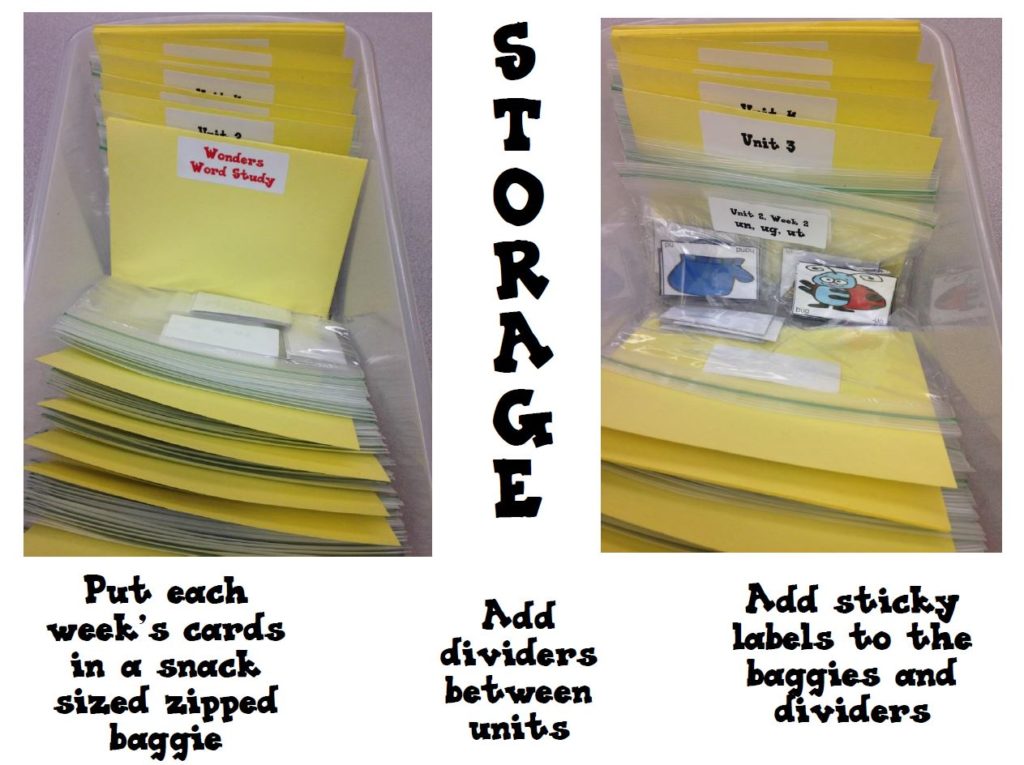 If you are running your word sorts with your whole class, you may want to laminate the sets, cut them out and place them in a baggie that is labeled with which word sort it is. You can store them in a plastic tub and re-use them over and over. Now there’s absolutely no prep each time you run a word sort group!!
If you are running your word sorts with your whole class, you may want to laminate the sets, cut them out and place them in a baggie that is labeled with which word sort it is. You can store them in a plastic tub and re-use them over and over. Now there’s absolutely no prep each time you run a word sort group!!
Who Else Can Run It?
One of the best aspects of running word sorting groups is that you literally train anyone to run them!
– Paraprofessionals
– Parent Helpers
– Volunteers
– High school helpers
How to incorporate it into Interactive Notebooks
Check out this blog post (coming soon) about how to incorporate it into interactive notebooks.
Independent Literacy Center Time
Check out this soon to be written blog post about how incorporate it into interactive notebooks. This link will be up and running soon!
Extension Activities
There are so many extension activities that your students can do after they are done with their sorts. Click here to learn more about extension activities for your word sort groups!
Video Tutorial
Here’s the same information in video format if that works better for your learning style!


